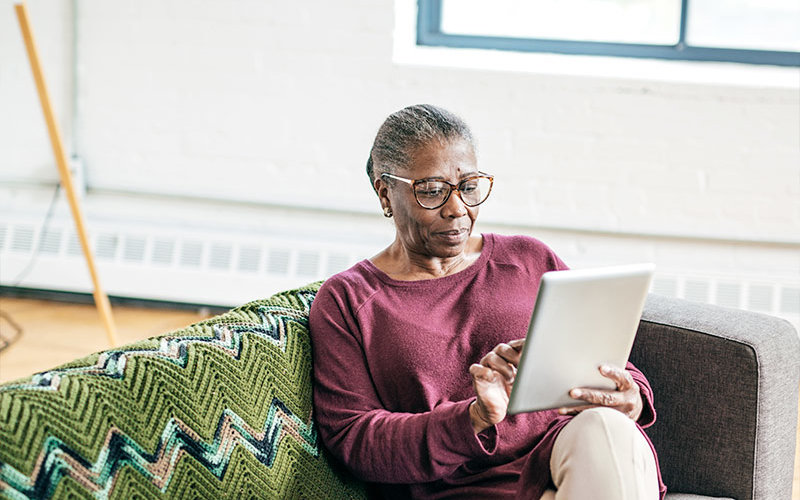
Social distancing has become the rallying cry of the COVID-19 pandemic, but a Cal State Fullerton aging studies expert cautions that the isolation that inevitably stems from it can lead to additional physical and mental health consequences for older adults.
“Social distancing impacts older adults across multiple health domains, especially for those who need to practice in-home self-isolation,” says Laura Zettel-Watson, professor of psychology and aging studies program coordinator.
“When humans are stressed or scared, they seek out the support of others. Social distancing restricts the ability to receive such support.”
How Social Distancing Impacts Physical Health
Physically, social distancing by staying home can lead to a decline in positive health behaviors, including diet, sleep and exercise. “As fresh foods become harder to access, diet may become less balanced, which can harm nutritional health and increase obesity risk,” explains Zettel-Watson.
Physical activity, in particular, is impacted by home confinement. “If older adults are restricted from moving about outdoors or attending exercise classes, mobility problems and disability can be exacerbated,” she says, adding that the stress associated with social distancing can worsen hypertension and overall heart health.
For older adults who depend on meal delivery services or transportation assistance, continuing these essential services may also expose them to a greater risk of getting sick.
Mental Health Effects of Self-Isolation
Not being able to leave home can create a host of mental health issues, such as feeling like one’s freedom or independence has been revoked.
“Some will suffer stress over not having basic necessities or a clear path to obtaining them,” says Zettel-Watson. “Others will have routine appointments postponed or religious services canceled, which are often the primary social interactions for many.”
Stress, anxiety, poor sleep, reduced exercise and lack of interaction with others can also increase cognitive impairment for some individuals, she says, and depression and anxiety also are common. “People of all ages are susceptible to these outcomes, but older adults, especially those over 85 and with health issues or mobility problems, tend to be at greater risk.”
Perhaps most at risk in the current social distancing model, she says, are older adults who previously engaged in high levels of social participation, such as quality face-to-face interactions with friends, neighbors, children and grandchildren.
Additionally, caregivers should pay special attention to rural elders who are geographically isolated and unable to venture out to stock up on supplies or seek medical attention.
“Older adults, already at relatively high risk for abuse or fraud, may find themselves at even greater risk during social distancing,” warns Zettel-Watson. “They should be on alert for people who are out to take advantage of them or profit from declining supplies and rising panic.”
Tips to Manage Social Distancing
Efforts by older adults and caregivers can mitigate the negative aspects of social distancing and help older adults survive the pandemic, shares Zettel-Watson.
“Independently living older adults should focus their energy on maintaining positive health behaviors, including eating balanced meals, exercising and sticking to established sleep schedules,” she advises.
“Those who find themselves in tight quarters with a spouse/partner or extended family may need to establish boundaries for space or ‘alone time’ to reduce social strain and preserve positive feelings toward one another.”
For older adults who are not otherwise high-risk, it may be possible to exercise or conduct visits in spacious outside areas, she says.
Technology — which has become imperative during the present health crisis in allowing people to work from home, continue their studies, and communicate with friends and family — can both increase and decrease the impacts of social distancing, says Zettel-Watson.
“Older generations are less likely to experience a smooth transition to technology,” she says, underscoring that those most at risk are often the least technologically savvy.
“However, when motivated to adopt a new technology, research shows that older adults tend to be quite successful adopters,” she shares. “Now is an excellent time for people of all ages to learn how to engage in video chats, shared online games, and even telemedicine and online health care management.”